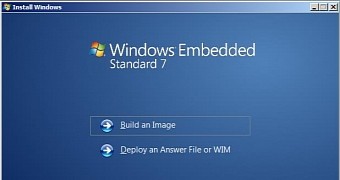Windows 7 no longer receives support since January this year, which means that devices still running the 2009 operating system aren’t getting any new patches and security updates.
This obviously means that the likelihood of security problems has increased, and any vulnerability that is discovered in the operating system would no longer be fixed
Microsoft continues to provide security updates to Windows 7 devices that are enrolled in its Extended Security Updates (ESU) program, and this is only available for companies paying for customer patches.
But in addition to Windows 7, Microsoft is also retiring other operating systems this month, and the most recent to get the ax is Windows Embedded Standard 7.
In an advisory published this week, Microsoft warns that this particular OS version reached the end of support on October 13, any devices still running it should be upgraded to Windows 10 IoT.
“Windows Embedded Standard 7 reached end of support on October 13, 2020. As devices running Windows Embedded Standard 7 will no longer receive updates of any kind from Microsoft, we recommend migrating any remaining devices to Windows 10 IoT as quickly as possible,” Microsoft says.
On the other hand, Microsoft also reminds customers whose devices are still running Windows Embedded Standard 7 that they can continue to receive support and security patches in exchange for a fee. The Extended Security Updates program is also available for embedded devices, and becoming part of this program would guarantee more security updates for all systems in a company’s fleet by October 2023.
However, worth knowing is that the price of security updates would increase on a yearly basis, so the third year of patches would also be the most expensive.
“If you were unable to complete your migration in time, Microsoft offers the Extended Security Update (ESU) program as a last resort. This paid program will ensure that your devices receive critical and important security updates for a maximum of three years after the end of support date, which in the case of Windows Embedded Standard 7, would be October 10, 2023,” Microsoft explains.
“Extended Security Updates for embedded devices, including Windows Embedded Standard 7, are only available from OEMs. Other products currently supported by the ESU program include SQL Server 2008 R2 for Embedded Systems, Windows Server 2008 R2 for Embedded Systems, and Windows 7 for Embedded Systems.”
Needless to say, sticking with an unsupported operating system is a big no-no, no matter if we’re talking about embedded devices or desktop computers. In both cases, the lack of security patches and fixes means that all vulnerabilities discovered in the OS would just remain unpatched, essentially opening the door to hackers especially on those devices where other security measures haven’t yet been put in place.
On the desktop, one way to secure a computer that’s yet to be upgraded from an older version of Windows that no longer receives support is to just disconnect it from the Internet and set more restrictions for the network, though it goes without saying that critical data should never ever be stored on such a device.
Unfortunately, third-party statistics show that there still are quite a lot of devices running unsupported software out there. Windows 7, for example, continues to be the world’s second most-used desktop operating system with a market share that exceeds 20 percent. What this means is that 2 in 10 PCs are still on Windows 7 despite the obvious security risks that are caused by an operating system that no longer gets any security updates.

 14 DAY TRIAL //
14 DAY TRIAL //